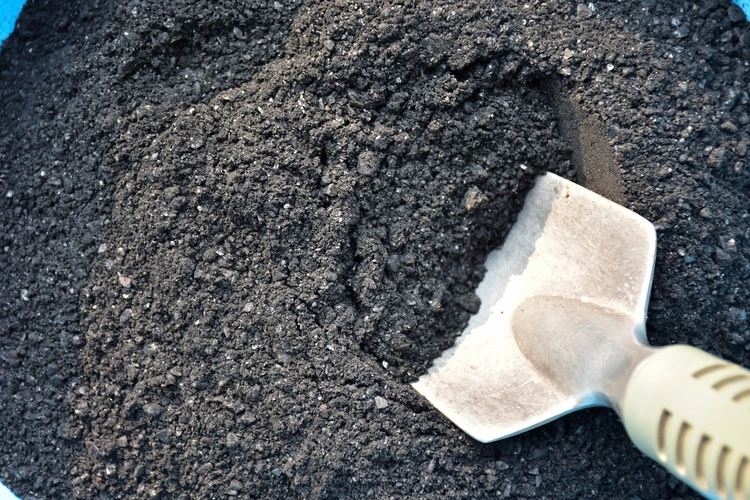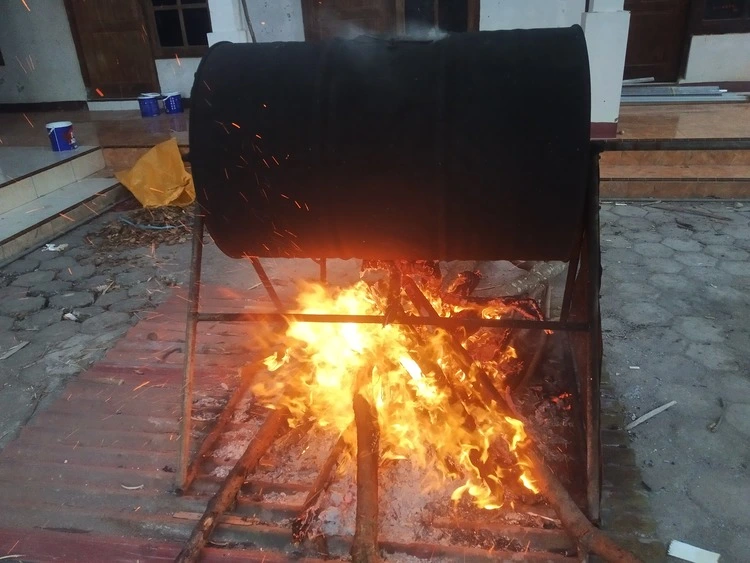
Meet biochar: the organic matter helping to capture carbon and improve soil quality – with origins stretching back 2,000 years
By
You might be hard-pressed to tell the difference between ordinary charcoal and biochar by appearance alone, but the two are in fact poles apart. The latter is a material much cleaner than charcoal and has a plethora of uses for the good of our planet: read on to find out exactly why biochar can be so helpful…
What is biochar?
When wood or any other organic material is heated between 300ºC -1,000ºC without oxygen – a controlled process known as pyrolosis – gases and bio-oils are produced, as well as a residue known as biochar.
Normally, when a plant naturally decays and dies, it releases CO2. But in the production of biochar, the lack of oxygen during burning means the carbon inside plants cannot be converted into the planet-polluting gas. Instead, it remains in a solid and stable form of carbon and takes on a very similar appearance to charcoal: fine-grained, black substance.
Biochar is made either using smaller kilns and stoves on a smaller scale, or in larger pyrolysis plants to cope with industry-level demands.
Enjoying this article? Check out our related reads:
With carbon making up approximately 70 per cent of its composition, biochar is a stable form of carbon that cannot easily escape into the atmosphere. As well as the actual product of biochar being useful, the heat made during its production can be stored and used as a form of clean energy.

Although biochar is making headlines now, its origins stretch back to Indigenous communities thousands of years ago. It was in the Amazonian basin where such communities created areas of rich soils, known as ‘terra preta’ (translated as ‘dark earth’), by adding charred biomass to them.
Previously, these soils were degraded, and it is thought that by adding biochar to them, Indigenous communities were able to survive and further expand across the Amazon.
Whether an intentional addition or not, these ‘terra preta’ soils have a much higher fertility than other soils in the Amazon and plants within them grow much faster, demonstrating one of the uses of biochar as enhancing the quality of soil.
Soil quality
Biochar is commonly added to soils to improve their conditions, but the many different types of biochar available to use will have varying effects on the soil at hand. While not a fertiliser in its own right, it acts as a sponge to retain water and nutrients, meaning the quality of soil can be improved by its addition.
For example, biochar made from manure may have a greater content of nutrients but a low carbon content compared with biochar made from crop and grass residue, which typically contains more potassium and a higher carbon content. This will all have an impact on how the treated soil responds, so research is required by those using the material to ensure its properties align with the effect they want on the soil.

Success stories from biochar have been recorded recently: in Oregon, applying biochar to soil allowed the crop yield of wheat to increase by almost 30 per cent. Companies are now trialling out using the material for various purposes: foresters across the states of Colorado, Utah and Idaho are exploring biochar production to turn dead trees into a valuable product, while cacao growers in South America are using the material and applying it to young trees to shorten the number of years to production to half.
The high pH of biochar, combined with the fact it can bind to heavy metals and pollutants, makes it a key tool in pollution management. Water treatment plants are looking to replace activated charcoal – currently used to clean up polluted water – with biochar, as well as dairy farms, considering the material as a means to reducing phosphorous in dairy lagoons (basins which store wastewater and manure produced by dairy herds.
Another benefit of using biochar to enrich soils is that it lowers the demand for traditional chemical fertilisers, which can cause groundwater contamination and leach into the ocean to create ‘ocean dead zones’.
In addition, when traditional nitrogen fertilisers are exposed to soil, chemical reactions occur to produce nitrous oxide, a gas that is 300 times more powerful at warming the planet than carbon dioxide. Switching out to biochar would definitively lower the rate at which these reactions and the release of harmful gases could occur.
Carbon sequestration
The production of biochar is carbon-negative and reduces the quantity of the pollutant in the Earth’s atmosphere, meaning it is a valuable resource to store carbon.
When organic material such as plants and trees die, they release CO2 into the atmosphere. However, when they are turned into biochar, the carbon inside them is converted into a solid, stable form which cannot easily escape.
Biochar is then applied to soils to increase their fertility – and in doing so, the carbon inside it is able to be locked away in the ground for many years, protecting our planet’s atmosphere from the polluting gas.
Ultimately, using organic materials to make biochar is much better for the environment than letting them naturally decay – the natural decomposition of plant waste would release higher amounts of carbon dioxide back into the atmosphere.
Biochar can also lower the emissions of nitrous oxide and methane, too. In a recent review of more than 200 global field studies, researchers found that in general, the use of biochar in field settings reduced nitrogen oxide emissions by 18 per cent and methane by three per cent,
One-size does not fit all
As explained, most organic materials can be used to make biochar – from shells to the waste production of breweries – but the biochar produced will have different properties as a result. Even during the pyrolysing process, various temperatures can be used with a vareity of effects.
One biochar may be incredibly useful for a particular soil and entirely worthless to the next, and it is this which makes the material difficult to produce en-masse and contributes to its higher price point compared to other soil additives.
For biochar to effectively work on a large-scale and replace some of the more traditional methods of soil improvement and carbon capture, more research will be required to understand and educate organisations and individuals on exactly the type of biochar that they need.




